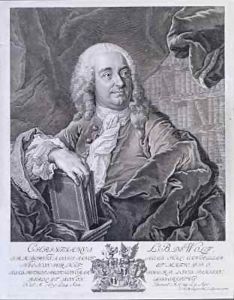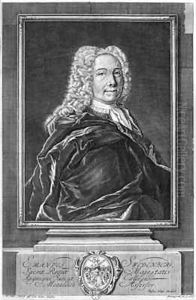Johann Martin Bernigeroth Paintings
Johann Martin Bernigeroth was a German engraver born in 1713 in Leipzig, Saxony. He hailed from a family of artists, as his father, Martin Bernigeroth, was also an accomplished engraver. Johann Martin developed his skills under the guidance of his father, who was his primary teacher and mentor.
Bernigeroth's early work primarily included portraits and book illustrations. He became known for his fine and detailed engraving work, which was characteristic of the Baroque style prevalent during that period. His career flourished in Leipzig, which was a significant cultural and intellectual hub in Germany at the time, allowing him to engage with various publishers and authors.
As he progressed in his craft, Bernigerooth's reputation grew, and he began to receive commissions from notable figures and institutions. His engravings often featured religious and historical themes, reflecting the interests of the period. Johann Martin was part of the larger Bernigeroth family dynasty of engravers, which included his brother Martin Gottfried Bernigeroth, who was also an established artist in the same field.
Bernigeroth's contributions to the art of engraving were significant during the 18th century, as he helped to propagate the visual culture of the time through his prints. Despite the prominence of other artistic forms such as painting, Bernigeroth’s engravings were important in disseminating images to a broader audience, which was crucial before the advent of photography and digital reproduction technologies.
Johann Martin Bernigeroth continued to work and live in Leipzig until his death in 1767. Although not as widely known today as some of his contemporaries, his work remains a testament to the engraving artistry of the 18th century and provides valuable insight into the cultural and artistic landscape of the time.

